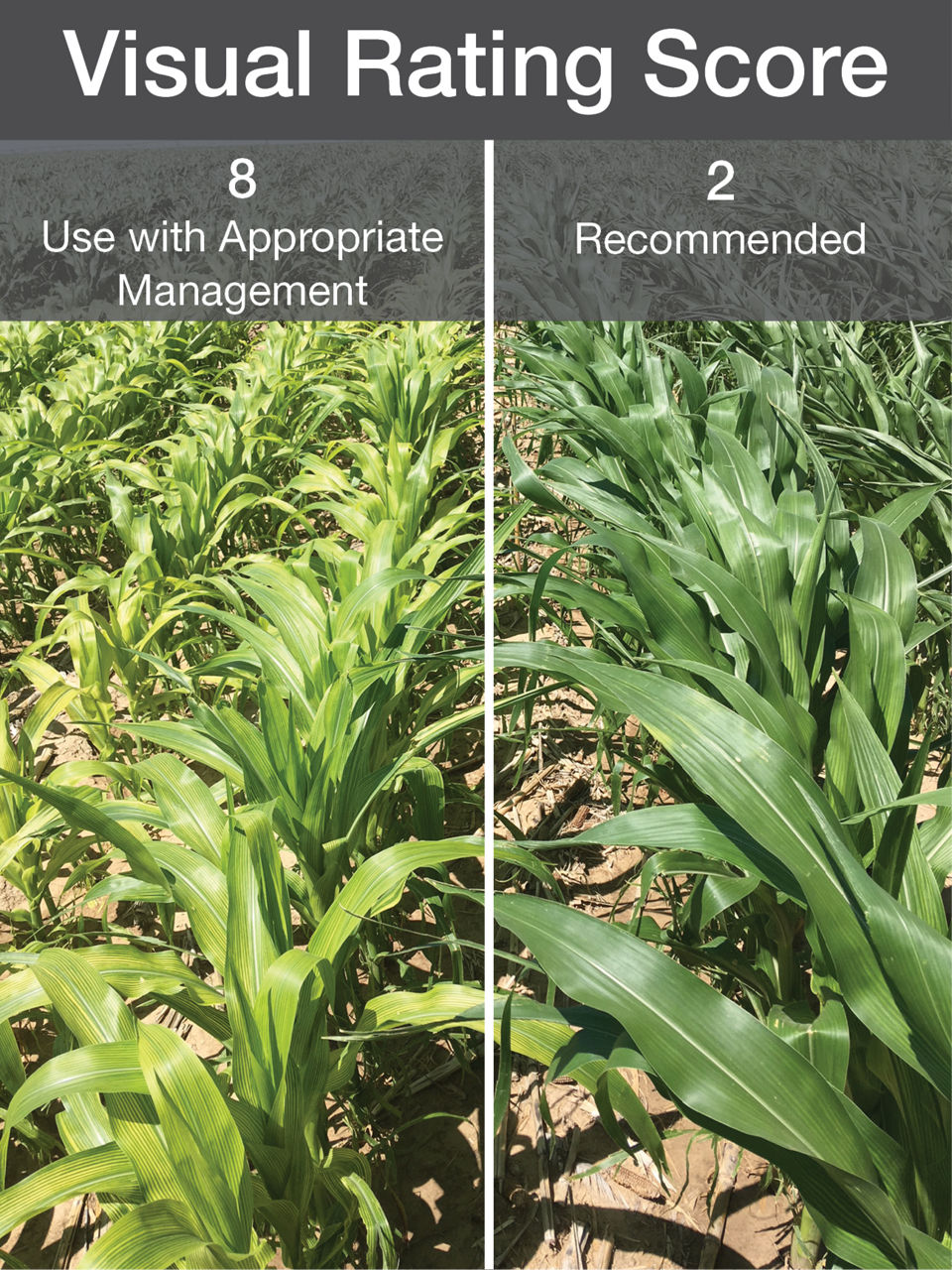13 MIN READ
Channel® Brand Corn Products Response to High pH Soils
January 13, 2025
To compare yearly data collected for this study, click on a tab.
Trial Objective
Corn products vary in their tolerance to soil pH and can be considered low tolerant, semi-tolerant, or tolerant to the effects of high soil pH (7.6 or higher). Key nutrients, including iron, are tied up and unavailable in highly alkaline soils. Products with a low tolerance to high pH soils can express iron deficiency chlorosis (IDC) resulting in symptoms such as yellow leaves, interveinal chlorosis, and stunted growth. A better understanding of product performance under varying soil pH conditions is important for positioning products to help maximize yield potential.
In Western Kansas and Eastern Colorado, the high soil pH is caused by excess lime from high calcium carbonate concentrations in the soil parent material, which often comes from eroded sidehills and cut areas in fields. The objective of this ongoing trial is:
- To determine the visual and potential yield* response of a range of different corn products to high pH (7.6 to 8.5) soils.
Research Site Details
- For this trial, 40 corn products of varying maturities (RMs) were planted in one pH block.
- 18 of these products were Channel® brand RIB Complete® corn blend products; only the results of the Channel® brand products are shown in this report.
- A visual color rating (Figure 1) of the foliage was taken at the V8 and VT growth stage:
- very dark green = 2
- pale-yellow color = 8
- *Due to hail damage at both locations in the early reproductive growth stages, yield data was not taken at either location and only the visual color rating is shown.
- Each product was replicated 4 times.
- Soil pH was determined by grid sampling each trial area at a 1/10th acre density.


Understanding the Results
High pH color rating results for the 18 Channel® brand corn products (Table 1). Six products were above average and highly recommended, nine were above average and recommended in most situations, one was average and recommended in some situations, and two were below average and not recommended for high pH soils. It is important to note that the visual rating scores are just the average taken across the replications in this trial, while the product placement recommendations are from the expertise of local Channel® brand Technical Agronomists and based on multiple years of experience and observations across several fields. Though visual ratings are a good indicator of potential performance, previous results are included in the recommendations. Channel® brand representatives can help with product placement questions.

Key Learnings
- High pH soils are typically found in areas with eroded topsoil and topography changes. In those situations, it can be difficult to compare yield potential between neutral and high pH areas of the field. Growers need to keep this in mind while making yield comparisons on their own farm.
- The importance of selecting a product able to tolerate high pH soils varies based on the proportion of high pH soil acres in each field and the pH range within each field.
- The pH tolerance of any corn product is indicated by a visual color rating. However, color expression can also be influenced by other abiotic factors such as soil temperature, nutrient availability, and nutrient uptake. Growers should assess all potential problems when evaluating product performance under high pH soils and when selecting specific products for their fields.
1217_166707